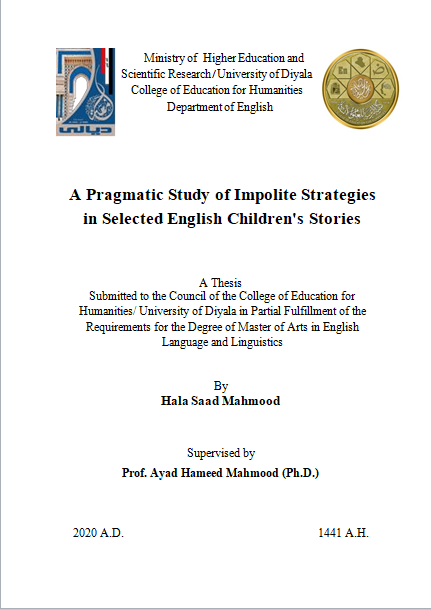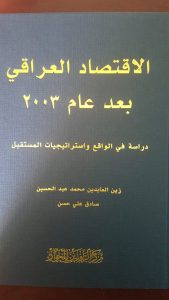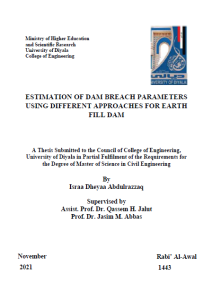Abstract
This study pragmatically investigates the phenomenon of impoliteness in selected English stories. It aims at finding out the types of impolite strategies and the functions behind using these strategies in the nominated literary texts.
It is hypothesized that impolite strategies are frequently used in English children's stories mainly for the purpose of mocking. To achieve the aims of the study, two types of procedures are followed: theoretical and practical. The theoretical part consists of two theoretical frameworks: one of impoliteness including its definitions, models, strategies, and another of children's stories including their historical perspective, illustrations, characteristics and types. The practical part consists of selecting a sample of children's stories and analyzing them according to Culpeper's (1996) model.
In this study, there is a combination of qualitative and quantitative methods in order to have fully-explained and accurate findings. The selected data consist of five short stories: Andersen's The Ugly Duckling and The Emperor's New Clothes, Grimm's Cinderella and Hansel and Gretel and finally Freeman's Billy and Susy.
The results of the study show that 'negative impoliteness' is the most frequent strategy in the selected stories. The results also show that mocking is the most frequent function behind using impolite strategies in children's stories. The study ends up with a number of conclusions, recommendations and suggestions for further studies, based on the findings of the study.





